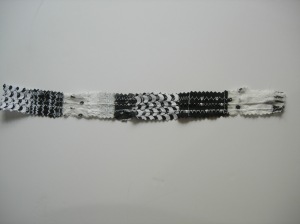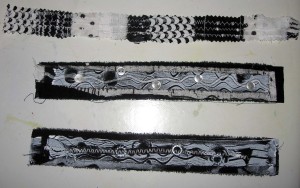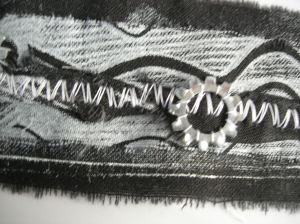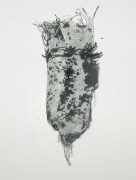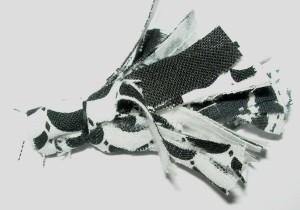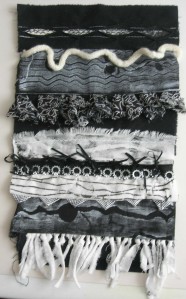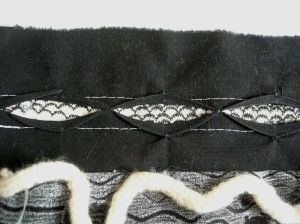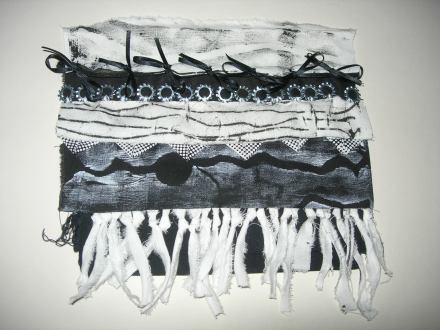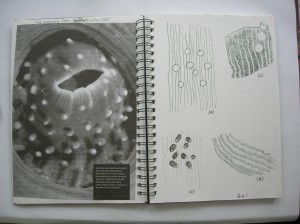I haven’t posted for a while, since I’ve had a friend from California staying for a few weeks and we’ve been doing lots of sightseeing and walking. However, I have snatched an odd 10 to 15 minutes here and there to do a little to the second part of Chapter 8, making a variety of trimmings. I’ve found these exercises great fun to do and I like the results. We were asked to make three kinds of trimmings which we might use to decorate our final 3D item: ribbons, cords and toggles.
Ribbons
For my first ribbon, I started with a patchwork strip left over from the Seminole work earlier in this chapter. I machined over it with white thread, but, although I tried altering the stitch and the spacing, it still looked boring.
Next, I tried gathering fabric squares in the middle, to make a bow tie shape, and stitching them onto the strip at right angles. This was more interesting. To finish off I sewed various buttons over the centre of each applied bow tie.
For the next two ribbons, I laid strips of various widths on top of each other, holding them together and decorating them with machine stitching. As an added decoration, I hand stitched buttons onto one and metal washers onto the other.
For my fifth ribbon, I tied together little scraps and strips of fabric left over. I quite liked the raggedy quality of this.
Cords
From left to right, the techniques used are:
- a simple fabric strip, knotted at intervals
- a bunch of several fabric strips twisted together and knotted
- a single strip of fabric, twisted and machine zig-zagged to secure. I used a bought spotted fabric for this and I liked how the occasional black spot showed through the stitching.
- three twisted fabric strips plaited with the ends knotted to secure
- a fabric strip twisted and then machine zig-zagged to secure
- three strips twisted and machine stitched as in 5 above, then plaited together.
Toggles
The first toggle I made by simply rolling up a strip of fabric and stitching right through the middle to secure it.
The second toggle was made by folding a strip of fabric and knotting it.
Toggle 3 was made by laying three different fabrics together, folding and knotting as with toggle 2.
Toggle 4 was made by folding a strip of fabric lengthways then tying four knots, one on top of the other.
Toggle 5 was made by tying a monkey’s fist knot into a very long strip of fabric according to instructions in Good Housekeeping’s Step By Step Encyclopaedia of Needlecraft by Judy Brittain (Dorling Kindersley Ltd 1979).
Finally, chopping leeks gave the inspiration for a tassel made by cutting a fringe in the long edge of a strip of fabric, rolling it up, and tying a thread around the uncut edge to secure it.
